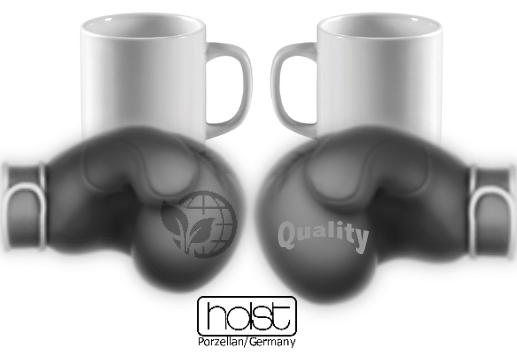Mono vs Double firing

Porcelain is an end product that only grows into a solid state when raw materials are fused and vitrificated together under great heat. This process of porcelain production is called porcelain firing, which can take place in different furnaces and production stages. There is the so-called mono firing (single firing) and the double firing process (double firing). It can be seen that the mono firing is mainly used in Asia and the double firing is mainly used in Europe.
Scholars are very divided about the efficiency of the single firing! Advocates of the biscuit brandy scold the single use brandy a "cheap production" from Asia of inferior quality. From a purely physical point of view, this assertion is gross nonsense, because in the end porcelain - meaning hard porcelain - must exhibit standardized, uniform properties such as porosity, density and hardness. The end product does not differ in terms of its physical values, regardless of whether it was produced in single or double firing. Asia and Europe do not differ in terms of raw materials either.
It is true that exact shaping of the articles in single firing is more difficult because the deformation of the porcelain mass in single firing is subject to higher tolerances. Precisely fitting porcelain, such as calipered ware, Gastronorm containers, etc. can hardly be produced in single firing. Porcelain with a particularly break-resistant finish, such as High Alumina tableware, cannot do without annealing in the dual firing process.
The big question is - and is becoming more and more important as consumers become more environmentally aware - how much energy can be used to achieve what. Does a "boringly normal coffee cup" for catering, clinics, institutions, service areas, etc. really always have to meet the "highest quality standards"? Will a patient recover faster if he drinks from a dual-brand cup?
Today's incandescent firing is a purely negative evolution of industrialized porcelain production in the manufacture of conventional catering utensils. In the effort to produce ever larger quantities in ever shorter time, modern technology has virtually overtaken itself. Modern fast firing kilns can no longer work without a pre-firing kiln because the first-melting glaze as a cover layer on the green body would no longer release the degassing reactions of the different raw materials in the sintering process. As a result, many manufacturers have not only scored quite an own goal in terms of sustainability & environment, but also afford unnecessarily high production costs.
In view of the ecological situation and due to global warming, German manufacturers in particular should think about "genuine environmentally friendly measures" and not sell consumers "cost savings" as achievements for the environment.
Conclusion: There is no "better" as an overall result.
